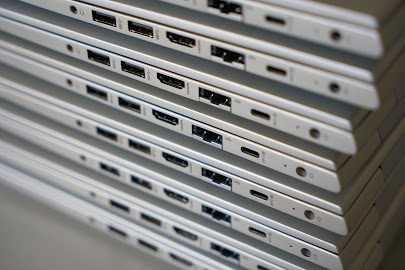DIGITAL LIFE
A new lease on life for old laptops
Researchers in India have developed a tool that can estimate the remaining useful life of an otherwise obsolete laptop computer based on quality grading of two of its main components—hard drive and rechargeable lithium-ion battery.
The work, published in the International Journal of Process Management and Benchmarking, focused on developing a decision support tool (DST) that could improve sustainable laptop remanufacturing practices.
Gurunathan Anandh, Shanmugam Prasanna Venkatesan, Sandanam Domnic, and Santosh Awaje of the National Institute of Technology in Tiruchirappalli, Tamil Nadu, discuss the concept of remanufacturing, the process of disassembling, assessing, and repairing or replacing components to restore functionality to a device.
Remanufacturing could be one solution to the environmental and economic challenges we currently face. However, successful remanufacturing needs accurate information about the device's components, which presents its own challenges.
The team turned to machine-learning algorithms such as Random Forest (RF) to help them predict remaining useful life and K-means clustering for the quality grading of components. The researchers' approach uses well-known spreadsheet software, Microsoft Excel, as its interface and is supplemented with Python scripting. By making such choices, the researchers hope their system should be accessible to practitioners with varying levels of expertise.
The practical use of the research will fill the gaps needed to improve the efficiency and effectiveness of the laptop remanufacturing process. By using an approach based on data and machine learning, the team suggests that remanufacturing can be guided for the repair, replacement, or necessary disposal of the main components.
This would not only reduce waste and give a new lease of life to old equipment but could improve profitability for the companies involved in remanufacturing. The next step will be to extend the method to other laptop components and perhaps to other types of device.
Provided by Inderscience


No comments:
Post a Comment